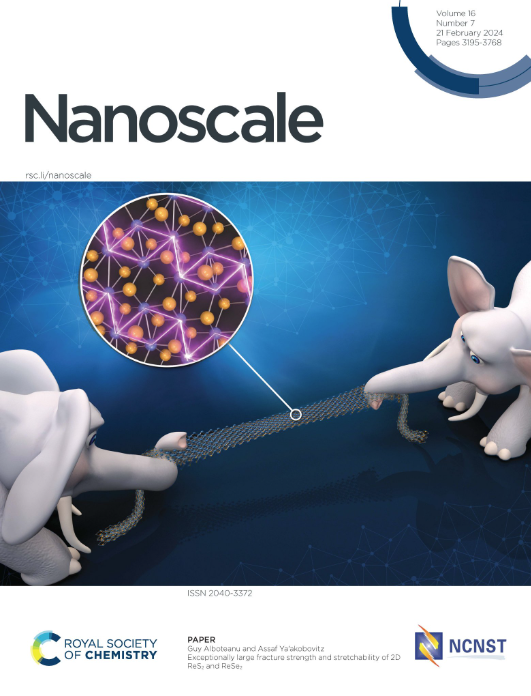Mechanism for spiral growth of β-antimonene on the pitted substrate: vacancy line aggregation triggered by nanoscale step-loops
IF 5.8
3区 材料科学
Q1 CHEMISTRY, MULTIDISCIPLINARY
引用次数: 0
Abstract
The rising new field of twistronics, which is centered on the mechanically twisted multilayers of two-dimensional materials (2DMs), is in need of direct growth methods for the desired samples. Here, we present a comprehensive strategy for synthesizing twisted multilayer 2DM via spiral growth mode. This strategy is based on first-principle calculations investigation of β-antimonene (β-Sb) on a pitted Ge(111) substrate surface with step-loops. Building on previous experimental observations, we have developed a theoretical model that elucidates the growth mechanism of the twist spiral structure. Our findings reveal that the step-loops play a crucial role in maintaining the lattice-mismatch-induced compressive strain in the β-Sb. As this strain accumulates, a vacancy line is inevitably formed in the first layer, facilitating the spiral dislocation in the second layer. It is also confirmed that the formation energy of the vacancies in β-Sb is lower in the high compressive strain state, and these vacancies tend to aggregate and form a linear structure. The kinetic study reveals a lower energy barrier for vacancy migration in the high compressive state. This theory presents a detailed growth mechanism for the spiral-assisted twist structure of 2D materials, which would be candidate samples for twistronics.β-锑烯在凹陷基底上螺旋生长的机制:纳米级阶梯环引发的空位线聚集
以机械扭曲多层二维材料(2dm)为中心的涡旋电子学新领域正在兴起,需要直接生长所需样品的方法。在这里,我们提出了一种通过螺旋生长模式合成扭曲多层2DM的综合策略。该策略基于第一性原理计算,研究了β-锑烯(β-Sb)在带阶梯环的凹点Ge(111)衬底表面上的作用。在以往实验观察的基础上,我们建立了一个理论模型,阐明了扭曲螺旋结构的生长机制。我们的研究结果表明,步进环在维持晶格不匹配引起的β-Sb压缩应变中起着至关重要的作用。随着该应变的积累,在第一层不可避免地形成空位线,促进了第二层的螺旋位错。在高压缩应变状态下,β-Sb中空位的形成能较低,这些空位趋于聚集并形成线性结构。动力学研究表明,在高压缩状态下,空位迁移的能垒较低。该理论提出了螺旋辅助扭曲结构的二维材料的详细生长机制,这将是扭曲电子学的候选样品。
本文章由计算机程序翻译,如有差异,请以英文原文为准。
求助全文
约1分钟内获得全文
求助全文
来源期刊

Nanoscale
CHEMISTRY, MULTIDISCIPLINARY-NANOSCIENCE & NANOTECHNOLOGY
CiteScore
12.10
自引率
3.00%
发文量
1628
审稿时长
1.6 months
期刊介绍:
Nanoscale is a high-impact international journal, publishing high-quality research across nanoscience and nanotechnology. Nanoscale publishes a full mix of research articles on experimental and theoretical work, including reviews, communications, and full papers.Highly interdisciplinary, this journal appeals to scientists, researchers and professionals interested in nanoscience and nanotechnology, quantum materials and quantum technology, including the areas of physics, chemistry, biology, medicine, materials, energy/environment, information technology, detection science, healthcare and drug discovery, and electronics.
 求助内容:
求助内容: 应助结果提醒方式:
应助结果提醒方式:


